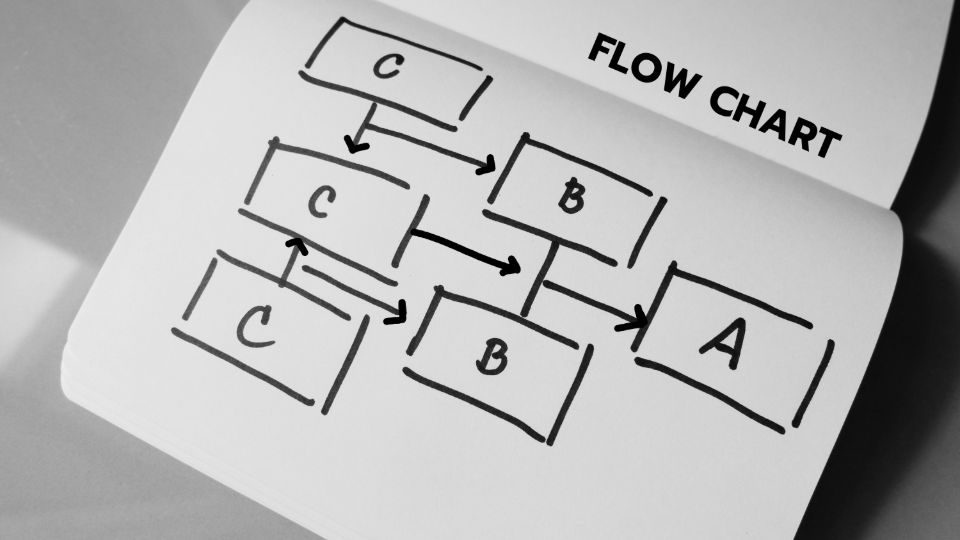The Reason You Need a Sales Process Flowchart
In today’s fast-paced and competitive business environment, having a clear and efficient sales process is critical to success. A sales process flowchart takes this clarity a step further by mapping out each step of the sales journey, from lead generation to deal closure. This visual representation makes it easier for sales teams to understand and follow the process, fostering alignment, improving efficiency, and driving consistent results.
With tools like Vabro, creating and managing sales process flowcharts becomes easier, helping your team stay organized and aligned. Let’s dive into why a sales process flowchart is so important for your business.
What is a Sales Process Flowchart?
A sales process flowchart is a diagram that visually outlines the sequential steps your sales team follows to convert prospects into customers. It serves as a roadmap of the entire sales journey, simplifying complex workflows and providing structure to the process. By breaking down the process into easy-to-follow stages, a flowchart helps teams better understand their roles, the next steps, and how to achieve success.
The flowchart typically includes key phases such as:
- Lead Generation: The first step where potential customers are identified.
- Qualification: Determining which leads are worth pursuing.
- Pitch: Presenting your product or service as a solution to their needs.
- Negotiation: Working through terms, price, and any final concerns.
- Closure: Finalizing the sale and moving the customer to the next stage.
Why is a Sales Process Flowchart Important?
Enhanced Clarity and Organization
A flowchart provides a clear, step-by-step overview of the sales process, ensuring that everyone on the team knows their role and responsibilities. Whether you’re a sales rep, a team lead, or a manager, this visual map helps eliminate confusion and promotes organization. It also makes it easier for teams to understand how their actions tie into the larger sales strategy.
Example: Sales reps can use a flowchart to ensure they don’t skip any steps, such as qualification or follow-ups, which could lead to missed opportunities.
How Vabro Helps: Vabro centralizes and shares these flowcharts across the team, ensuring everyone stays on the same page. You can also update the flowchart in real time, ensuring it reflects any process changes instantly.
Improved Training and Onboarding
For new hires, understanding the sales process can be overwhelming. A flowchart acts as an easy-to-follow guide that speeds up onboarding and makes training more efficient. New employees can visualize the entire process, helping them understand their role and how they contribute to the sales pipeline.
Example: Instead of reading through lengthy documents, new hires can refer to the flowchart for a clear, step-by-step process of how they should interact with leads, handle objections, and close sales.
How Vabro Helps: Vabro's user-friendly interface allows managers to create, share, and even annotate flowcharts, which can be used as part of onboarding materials for new hires.
Streamlined Collaboration
Sales teams often work closely with marketing, customer support, and other departments. A well-defined flowchart promotes alignment between these teams, ensuring everyone knows their part in the process. It highlights the handoffs between departments, such as when marketing needs to pass qualified leads to the sales team or when the sales team must provide post-sale information to customer support.
Example: If marketing generates leads, a flowchart ensures sales reps know exactly how to follow up and at what stage they should contact the prospect, making collaboration seamless.
How Vabro Helps: Vabro facilitates this cross-departmental alignment by integrating the flowchart within the platform, making it easier for teams to share, discuss, and refine the process collaboratively.
Identification of Bottlenecks
With a visual representation of the sales process, it becomes easier to identify inefficiencies or delays. A sales process flowchart can help highlight areas where leads get stuck or where sales reps spend too much time. By recognizing these bottlenecks, teams can optimize their process to accelerate sales and improve overall efficiency.
Example: If the negotiation phase seems to drag on longer than necessary, the flowchart can pinpoint where the issue lies—perhaps in the approval process, pricing discussions, or decision-making.
How Vabro Helps: Vabro’s analytics and reporting tools provide insights into where bottlenecks are occurring. The system allows you to track each stage of the sales process, making it easier to analyze performance and identify areas for improvement.
Better Decision-Making
Having a complete view of the sales process through a flowchart empowers leaders to make more informed decisions. Whether it’s refining the sales strategy or reallocating resources, understanding each step of the process helps guide decision-making. Leaders can analyze the flowchart to spot gaps, opportunities, or areas where resources are being underutilized.
Example: If a stage in the sales process consistently shows a low conversion rate, managers can decide to provide additional training or resources to that phase to improve results.
How Vabro Helps: Vabro allows teams to track key performance metrics, such as conversion rates at each stage, which are vital for data-driven decision-making.
How Vabro Can Help
Creating and managing flowcharts can become cumbersome without the right tools. Vabro offers intuitive solutions for designing, sharing, and analyzing sales process flowcharts, all within one platform. With its easy-to-use interface, Vabro makes it simple to:
- Design Flowcharts: Create customized flowcharts that reflect your unique sales process.
- Collaborate: Share the flowchart with your team, get feedback, and update it as necessary.
- Track Performance: Use Vabro’s analytics to monitor each step of the sales process and identify areas for improvement.
Conclusion
A sales process flowchart is more than just a visual tool; it’s a strategic asset that streamlines operations, enhances communication, and drives consistent results. By mapping out each step of the sales journey, businesses can ensure that everyone is aligned and that the process runs smoothly from start to finish. With platforms like Vabro, you can create, manage, and optimize your sales process flowchart to improve efficiency, reduce bottlenecks, and achieve your sales goals with confidence.
